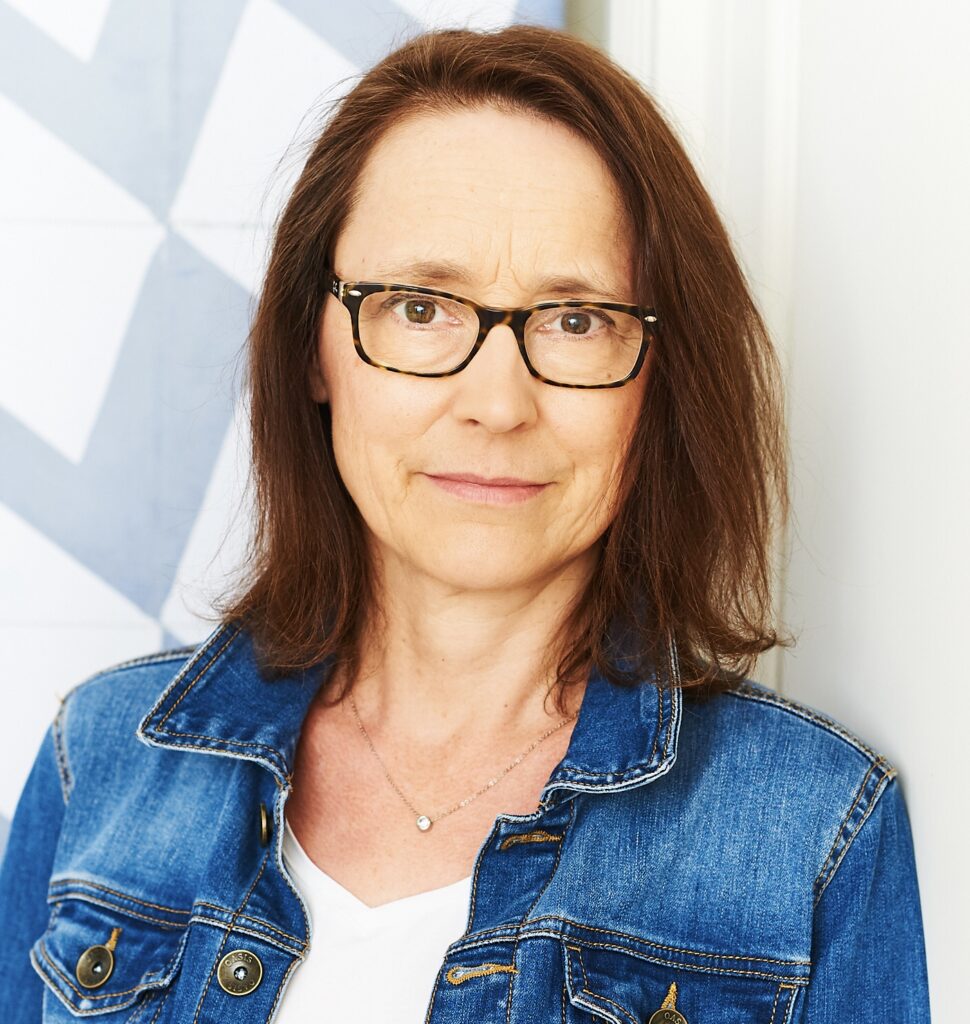I finished reading The Commuter in a day. I raced through it. It’s a brilliant domestic thriller which had me hooked from the very first page. Here’s my interview with Emma.

The Commuter is your seventh novel. How does that feel? It’s a huge achievement.
It feels like a huge achievement! I started writing, submitting and getting rejections when I was in my late twenties, found an agent in my late forties and published my debut when I was fifty, so I definitely put the work in. I still sometimes pinch myself.
Does the writing get easier?
I think the writing does, the editing doesn’t. It’s a long hard slog full of dead ends, frustrations and moments when I want to run away from it all. But when it’s finally signed off the satisfaction is huge. Writing the first draft is such a pleasure. If only the first draft was the last!
Where did the idea for come from?
I’ve lived in London and used the tube all my life and I’ve always enjoyed the free newspapers. The Rush Hour Crush feature in the Metro is so intriguing. When I was a teenager I used to look for Mr Darcys, now I scan faces and wonder what I’d write if I fancied someone. No one so far! It seemed like there could be a thriller in there somewhere.
What is your writing routine?
I get up early, ideally around 6am, have breakfast and start work. Then I work fairly solidly until twelve, have lunch and go for a long walk to mull over what I’ve done and set up the next chapter for the next morning. I like routine and deadlines and I’m not very flexible. But it gets things done.
Do you have a favourite novel that you have written?
Yes, my favourite is Keep Her Quiet which came out in 2020. One of the protagonists is an arrogant male author. I loved writing him!
What books have you read recently that you loved?
The Paper Palace by Miranda Cowley-Heller. I recommend it to anyone who asks me what to read next.
Do you have any favourite authors?
Loads! JP Delaney for quirky concept thrillers. Stephen King for lessons in story-telling. Celeste Ng is fantastic for family based noir. Robert Galbraith because I adore Cormoran Strike and need to know what happens between him and Robin. I like American literature too. AM Homes is a favourite. I wish Chimamanda Ngozi Adichie would publish another novel!
How did you get published?
Since it took me such a long time, that is a very good question. I had given up for a few years, then my oldest child went off to University and I felt like I had to have another go. I wrote two novels, both rejected, then started writing short stories and entering them in online competitions. These did well. I had about a 25% hit rate of first, second and third prizes and those gave me credibility in the eyes of agents. I needed that because I had zero connection to the publishing industry. I turned one of the prize winning stories into a novel and this time, instead of sending it out to a handful of agents, getting rejections and losing heart, I sent it to thirty within three weeks so that I wouldn’t give up at the first No Thanks. That worked. I had twenty-six rejections, four requests for the full manuscript and an offer. One of the best days of my life. My agent at the time, Victoria Hobbs at AM Heath, secured a deal with Transworld.
What advice would you give other writers?
Mark out your time, even if it’s only half an hour a day. Stick to a routine and write even if you don’t feel like it.
Learn to properly critique and edit your own work before you give it to anyone else – I did a course on this and it was invaluable (Jericho Writers).
Don’t give your MS to friends and family to read and comment on. It puts them in a difficult position. Instead, if you’re serious start saving up for a professional critique from a reputable company like Cornerstones, Jericho Writers or The Novelry. But don’t send them anything until you’ve gone the extra mile. (see learn to critique and edit your own work!)
Also, interrogate your ego. It could be getting between you and representation. There’s the ego that will organise a professional edit but not take the advice because it doesn’t agree. There’s the ego that has that one precious pearl of a book and can’t move on from it despite repeated rejections. There’s the ego which will only write ‘what I want to write’, and won’t look for the space where what it wants to write dovetails with what people want to read.
What’s next for you?
Next is a thriller about the devastating aftermath of a lie told by an angry and embarrassed teenage girl. That’s coming out in October 2025 and I’ve just sent a draft to my agent to take a look at before it goes to my editor. I have everything crossed! I heard today that she’s read a third of it and loves it. Hopefully the next two-thirds won’t change her mind.
The Commuter is out on October 10th.


